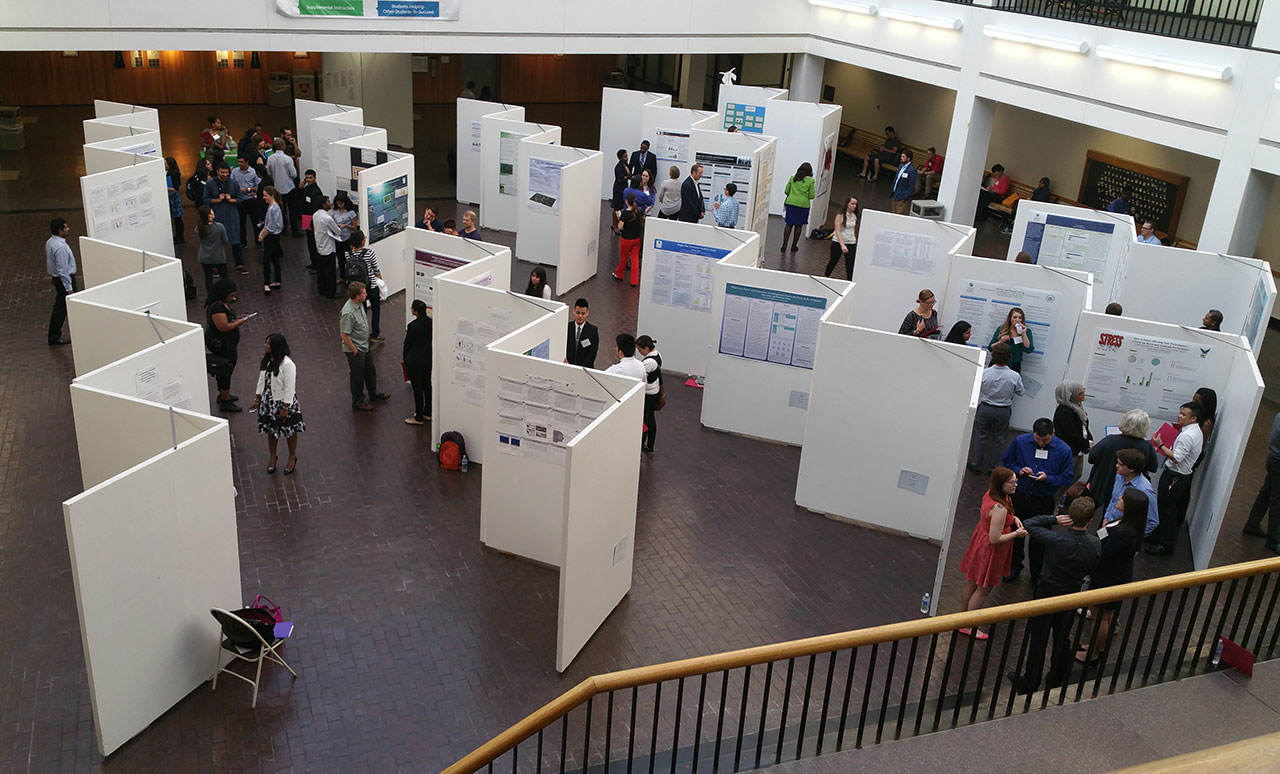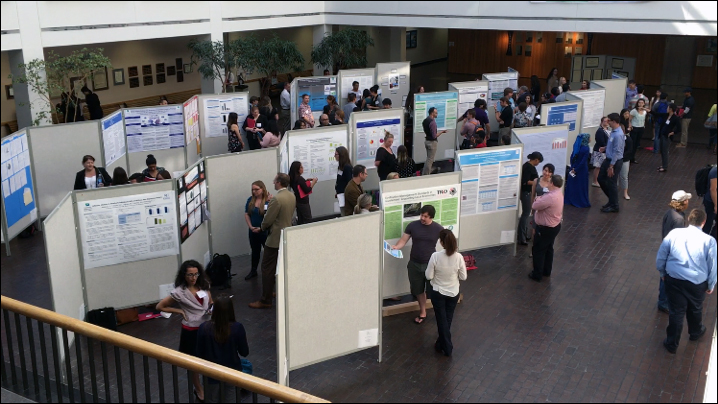
Student Conference for Research and Creative Arts to be conducted online

The 26th Annual Student Conference for Research and Creative Arts (SCRCA), which was originally scheduled to be held on campus April 13-16, will now be hosted virtually April 16-30. With the campus-wide cancelation of events, because of the continued spread of COVID-19, the conference will be completely online.
“The Conference will kick-off with the Bachelors of Fine Arts Senior Art Exhibition on April 16,” said Stuart Larson, department chair for communication and studio arts. “And will conclude on April 30 so as not to interfere with finals.”
Annually, SCRCA provides a way for students to showcase original work to the public in various ways such as speeches, displays, PowerPoint presentations and other mediums.
In past years, the conference has featured on-going showcases of posters and photograph displays during the week of the conference. Each day of the week had roundtable discussions, oral speeches, mock trials, and other events taking place every few hours throughout the day.
Each presentation would cover different views on a multitude of topics. The participants would prepare time for questions and answers at the end of their presentations, which gave the public an opportunity to understand the viewpoints of the presenters. It also made the showcases more interactive.
With the switch to a virtual conference this year, there have been a few participants who felt their presentations would either be too difficult, if not impossible, to change and have dropped out.
With the sudden change of going virtual, some of the participants will have to adjust their presentations to be able to present online. Some speech presentations will be able to adapt with minimal challenges, but Larson – who serves as a faculty committee member for the conference – said some with visual displays may have to work harder to keep their appeal.
“The poster session is one that would be very difficult to recreate online,” Larson said. “When everyone has their research posted on panels in the atrium, there is a real energy in the air – and just walking around looking at the scope of everyone’s hard work is truly inspiring.”
Larson hopes that by having a virtual platform for this year’s conference, it could increase public participants viewing SCRCA, since they will not have to rush past the exhibits to go to class and can watch from the comfort of their homes. Larson said the online accessibility is one aspect that has been positively looked at by participants.
“In fact, we may be able to use this as a model for future years,” Larson said. “I could see that next year, we could have face-to-face presentations, but stream the panels live for people who can’t make it. Since everyone is more-or-less cooped up at home, I actually expect audience attendance to increase.”
Another advantage in making the conference virtual, Larson points out, is the presentations can be viewed one at a time. The conference typically has two or three presentations showing simultaneously during each time slot.
This is not the first time the conference organizers have had to think on their feet. The 22nd Annual SCRCA in 2016 was postponed because of inclement weather. The first day was lost, and those presenting that day had to be rearranged throughout that week.
The conference is still working out all of the details for the best way to have a smooth transition to streaming. SCRCA Director Pilar Goyarzu, faculty committee members, like Larson, and volunteer faculty/staff evaluators have offered their services and time to help any participant get the resources they need to best deliver their presentations.
“We are working diligently to provide the best virtual environment for each student,” Goyarzu said.
The conference continues to have a high number of participants. Participants have the option to pre-record their presentations or to stream live.
“Though COVID-19 has changed how we had planned on offering these experiences through the conference, we all are learning how to accomplish the same goals through different mediums,” said David Rachita, dean of students. “This global pandemic is actually just another way to take the skills we learn in the classroom and put them to use in solving a problem we never really knew we had. Learning in and outside the classroom at its best.”
Student and public participation is strongly encouraged at no cost. Details on how the public can view the presentations are still being worked out. Times for when the streaming will start are undecided, but the dates remain the same and updates will be posted on the conference website.
